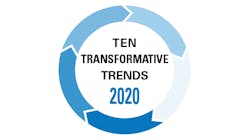For several years now, the discussion around the social determinants of health (SDOH) has been ramping up in U.S. healthcare, with increasing interest in “connecting the dots” between the daily lived experiences of Americans, and their interactions with the formal healthcare system, with the understanding that approximately four-fifths of the determinants of an individual’s health status lie outside the scope of formal healthcare system interactions.
What remains challenging is not the concept of understanding these connections, but rather the execution of any kind of plans, given the complexity of both our U.S. healthcare delivery and payment systems, and the complex interaction between public entities in a country with a hyper-complicated mix of public and private entities operating around the well-being of the public.
Still, hospitals, medical groups, and health systems are beginning to move forward, sometimes in conjunction with health plans. A July 2017 survey conducted by Deloitte found that 80 percent of hospitals have executive management teams committed to “establishing and developing processes to systematically address social needs as part of clinical care.” It also found that hospitals are screening inpatient and high-utilizer populations (83 percent doing so) for social needs, though only 69 percent are screening more broadly in their communities. The problem remains that nearly 40 percent of hospitals reported in 2017 having no current capabilities to measure the outcomes of their activities.
Things are moving forward in a variety of communities now, though. Among many examples nationwide:
In New York City, Unite Us, a technology company that builds coordinated care networks to connect health, and social care providers are teaming up to provide ride-enabled referrals. This spring, the organization teamed up with rideshare company Lyft to integrate Lyft’s ridesharing services with Unite Us’ coordinated care network in order to improve access to health and social care services for thousands of people across the country.
In the Tidewater region of Virginia, United Way of South Hampton Roads in Virginia and its partners have created a community indicators dashboard for Greater Hampton Roads, with the partnership using data to identify and address health disparities impacting their community, including gun violence, trauma, mental health, and opioid treatment.
In Columbus, Ohio, Molina Healthcare Inc., a California health insurer focused on Medicaid and Medicare plan members, in February launched a Social Determinants of Health Innovation Center charged with developing programs and best practices to address healthcare access barriers created by social factors, with a goal of enhancing patient-centered care across Molina’s service areas throughout the United States. The center will act under a shared services model and be accountable for driving the company’s SDOH strategy.
The role of clinical informatics in all of this is not lost on some clinician informaticist leaders. During a webinar this spring presented by Systems for Action, a Robert Wood Johnson Foundation program created to help connect medical, social, and public health systems in the U.S., Joshua R. Vest, Ph.D., director of the Center for Health Policy in the School of Public Health at the Indiana University Purdue University Indianapolis, described research work his organization is doing to implement machine-learning-based risk stratification to identify patients in need of what are called “wraparound” services such as housing, transportation and food assistance, and the fundamental challenge that “the current medical care system is not designed to address these issues. It is organized to get people into treatment and get them out, and is not conducive to a long-term, high-touch approach that social issues need,” he said.
Last June at the AHIP Institute in Nashville, sponsored by American’s Health Insurance Plans, Joyce Chan, vice president, Medicare, at HealthFirst, a New York City-based Medicaid health plan, gave her audience a very clear sense of the challenges involved, when she described how her 1.4 million-member plan took on SDOH challenges, and how challenging the data collection turned out to be. “We turned to analytics and tried to develop a model to predict member-level social determinants,” she reported. “We started by using Z codes as well as member demographics and census data. The model we developed identified four times as many members at risk of social determinants (6.5 percent,) as did observed prevalence from claims diagnosis codes (1.7 percent).” Working with a local provider, she and her colleagues found that their model was “highly predictive of health risk.” Integrating that model into their readmissions model, she and her colleagues found that the SDOH risk model score was second most relevant predictor in their readmissions model. In other words, predictive analytics is going to be one of the key elements in working forward on SDOH work.
All those involved in this work, coming from all sectors, agree that the key to the ongoing evolution of SDOH work in the next several years, will be the need for stakeholders from across the healthcare system and beyond, to bridge data/information, population health risk assessment, and clinical to social services gaps, in order to create the connections needed to improve health status across whole communities.


